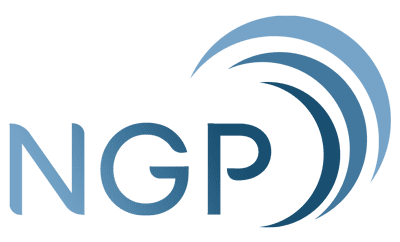Many still believe the practice of applying flashy tactics to achieve market-disrupting notoriety – but the Software as a Service (SaaS) spaces have vastly evolved from mere gimmicks, with consumers now tuning out generic scattershot messaging because of information overload, and instead gravitating towards user-centric written content: meticulously crafted to appeal to their interests, address their specific needs with solutions that offer value.
This content strategy is far more effective and ensures your brand resonates with your audience. As a result, you establish trust, position your brand as a trusted SaaS advisor within your niche, and ultimately, convert potential customers into loyal brand advocates.
Want to get started? Scroll down for the comprehensive guide!
Understanding your Audience
The foundation of any successful written content starts with going beyond demographics and analyzing their needs and buying behaviors to extensively gain insight on which tone, style, and topics are best to use for maximum resonance.
To achieve that, follow these steps:
- Identify customers’ demographics, pain points, and needs (e.g., concerns).
- Develop a detailed buyer persona (e.g., motivations, behavior patterns, and content preferences) to gain a crystal-clear picture of your ideal customer.
- Craft a strategic content approach for each buyer stage (e.g., awareness, consideration, purchase) to guide them toward conversion.
SEO Best Practices for SaaS Content
Implementing the best SEO practices bolsters your content to the top of search results and aligns you with qualified leads actively seeking your solutions. You may consider the following options:
- Keyword Research for SaaS Topics – Doing a thorough keyword research reveals the terms people frequently use to find services like yours, which you can use and incorporate into your content to boost its search engine visibility and get you in front of the right people.
- On-page SEO Techniques – Optimizing your web pages with the right title tags, meta descriptions, and headers ensures your content reaps the most benefits (e.g., earning more relevant traffic and higher search engine rankings).
- Long-tail Keywords in SaaS Content – Targeting these specific, less competitive keywords brings targeted traffic straight to your content because these are often customers, searching for niche solutions or products.
- SEO Tools and Software – Leveraging SEO tools and software streamlines the optimization process, helping you research effective keywords, track your content’s performance, and refine performances more efficiently.
Create Compelling Headlines
Headlines are the first impression of your content, capable of either convincing readers to proceed or scroll past, but there are additional steps you can take to ensure utmost effectiveness:
- Intrigue and Entice – Use action verbs and interest-piquing numbers to encourage clicks.
- Data-driven Improvements – Analyze your headlines with online tools to predict performance and pinpoint areas for improvement.
The Role of Storytelling in SaaS Content
Storytelling is a powerful tool to utilize in transforming your SaaS content; it’s capable of building deeper connections with your audience, making your brand relatable, memorable, and shareable. Therefore, weaving engaging storytelling into your content astronomically improves its quality and differentiates your brand from your competitors. For optimal impact and messaging alignment, choose the right content format from this list:
- Blog Posts and Articles – Perfect for sharing informative insights and establishing yourself as a thought leader.
- Case Studies and Customer Success Stories – Potent for showcasing the real-world impact of your SaaS product and credibility.
- E-books and Whitepapers – Ideal for an extensive display of your expertise and capabilities on niche-related topics and concerns.
- Video Content and Webinars – Best for demonstrations and tutorials, especially audiences who prefer bite-sized dynamic formats.
- Infographics and Visual Content – Suitable for those seeking complex information in a clear, concise, and sharable manner.
Content Optimization for Lead Generation
Optimized content attracts qualified leads by ranking higher in search engines, using clear and accessible message that showcases expertise. To amplify optimization practices, implement these practices:
- Create Content with Clear CTA (Call to Action) – Every piece of content should guide readers towards a desired action, such as signing up for a free trial, downloading a resource, or contacting sales. This is crucial for converting readers into leads.
- Use Content to Nurture Leads – Content plays a vital role in nurturing leads through the sales funnel. By providing valuable information at each stage of the buyer’s journey to build trust and move leads closer to conversion.
- Content Personalization Strategies – Tailoring content to audience interests and behaviors aligns it to their interest, increasing engagement and conversion rates, and making it valuable to them.
The Importance of Consistency and Quality
Prioritizing consistency and quality ensure a reliable, high-standard output that meets customer expectations and satisfaction. For best results, sustain the following:
- Publishing Schedule – Regularly publishing content to stay top-of-mind can build audience, keep them on updated, and stablish credibility and authority in your industry.
- Content Quality– Investing in well-researced, informative content guarantees you’ll be able to deliver high-quality content to your audience.
- Content Audit – Routinely auditing content can help identify outdated information and opportunities to optimize for better performance.
Utilizing Content Promotion Strategies
Without promotion, your content won’t reach its intended audiences, regardless of how much effort you’ve poured into crafting the content. For a more aligned reach, decide among these methods:
- Social Media Marketing – Offering targeted content promotion; just apply the suitable approach (e.g., dynamic videos for TikTok, niche commentaries on LinkedIn, or infographics for Instagram).
- Email Marketing – Allowing your email list to receive direct, personalized communication that guarantees engagement.
- Guest Posting and Content Syndication – Guest posting on reputable industry blogs and syndicating your content on platforms like Medium are excellent for broadening your reach and attracting new audiences.
Crafting SaaS content isn’t just about churning out random material to gain an ounce of notoriety in hopes it sticks. It’s about delivering value aligned with customer needs. As you understand your audience and implement the best SEO practices, you’ll want to seek professional consult, particularly with a seasoned public relations agency. Once done, you’ll witness stronger customer relationships and significant business growth.
Harmony Adiao-Carrillo is the editorial lead of NGP-IMC.


